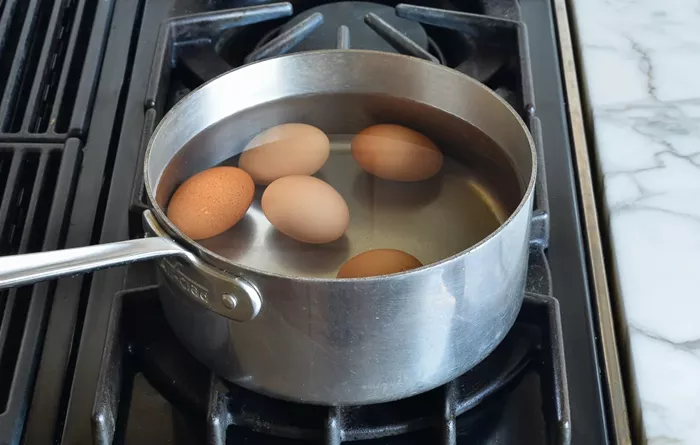For years, food lovers have debated the best way to cook a boiled egg. Now, scientists claim they have figured out a method that not only cooks the yolk and white perfectly but may also increase the egg’s nutritional value.
The technique, known as “periodic cooking,” was detailed in a new study. Here’s what researchers found, plus how you can try it yourself.
The Egg Dilemma
Published in Communications Engineering, the study aimed to solve a long-standing problem: the egg yolk and white cook at different temperatures. The egg white (albumen) needs to reach 185°F, while the yolk cooks best at 149°F.
This temperature difference often makes it challenging to get the perfect hard-boiled egg without overcooking the yolk. High-end chefs sometimes separate the yolk and albumen to cook them separately at their ideal temperatures.
However, researchers wanted to figure out if there was a way to cook both parts of the egg together—without cracking it open.
The Breakthrough Method
To address the issue, researchers developed a computer model to test different cooking methods. They found that alternating between boiling water (212°F) and a cold water bath (86°F) produced the best results.
This technique, called periodic cooking, involves moving the egg between the two water baths every two minutes for 32 minutes.
The researchers then tested this method against traditional hard-boiled, soft-boiled, and sous vide eggs. After cooking, the eggs were analyzed for texture, sensory qualities, and chemical composition using advanced tools like nuclear magnetic resonance and mass spectrometry.
The Results
Periodic cooking produced eggs with a soft yolk and firm white, combining the best textures of soft-boiled and sous vide eggs. The egg white was fully set, while the yolk remained creamy and tender.
The periodic method kept the yolk at a steady 153°F, while the egg white fluctuated between 86°F and 212°F. Furthermore, eggs cooked this way contained more polyphenols—micronutrients that help protect cells and may reduce inflammation and disease risk.
Why More Polyphenols?
The researchers aren’t entirely sure why periodic cooking increases polyphenol levels, but they believe that cooking eggs close to the protein’s denaturation temperature helps preserve nutrients.
Experts also note that some polyphenols are heat-sensitive. Overcooking can cause them to break down, but by avoiding excessive heat, this method seems to preserve more of these beneficial compounds.
However, nutritionist Jessica Cording emphasized that regular boiled eggs still offer a good amount of nutrients, even without this new cooking technique.
Is It Safe to Try?
Despite the novelty of the method, food safety experts say there’s no cause for concern. According to Ellen Shumaker, PhD, director of the Safe Plates program at North Carolina State University, this cooking method is safe as long as the egg is cooked long enough. The 32-minute cooking time is sufficient to kill off harmful bacteria like salmonella.
For reference, the U.S. Department of Agriculture recommends cooking eggs in boiling water for 12-18 minutes, depending on the egg size, to ensure they are fully cooked and safe to eat.
How to Try Periodic Cooking at Home
Periodic cooking isn’t the quickest or easiest method, but it can be a fun experiment for anyone willing to give it a try.
Here’s how to do it:
- Get a Food Thermometer: To make sure you’re hitting the right temperatures, a thermometer is a must.
- Prepare Two Water Baths: Boil water on the stove and set up a separate bowl with water at 86°F (you’ll need to adjust the cold water throughout the process).
- Cook the Egg: Place the egg in the boiling water for two minutes, then move it to the cold water bath for two minutes. Repeat this process eight times.
Extra Tips:
- Use medium-sized eggs (about 68 grams each) for the best results.
- You can gently scratch the top of the egg to prevent cracking when placed in hot water.
- Stir the egg gently in the cold water bath to keep the yolk centered.
- To speed up the process, raise the cold water temperature to 104°F and reduce the number of cycles.
While this method may require patience, it promises to make your eggs tastier—and potentially more nutritious—than ever before.
Read more:
- Norovirus: What You Need To Know About Its Symptoms And How To Stay Safe
- New Study Reveals High Concentrations Of Microplastics In The Human Brain
- Eating One Egg A Week May Lower Heart Disease Death Risk, Study Shows


